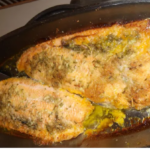During the hot season we really want light dishes, especially cold soups and salads. When it comes to cold soups, gazpacho and salmorejo are so famous that they cross the borders of the lands where they are traditionally prepared, Spain and Portugal.

It is because they are not just simple tomato soups. Both have unique flavors that frame the identity of these dishes and their place of origin. It may be that, if you have never prepared them or you are not from these places, they seem like the same recipe, but it is not like that. If you want to know what the differences are between gazpacho and salmorejo, we will tell you all about them and we will explain how to prepare them step by step so that you can include them in your menu.
What is the difference between salmorejo and gazpacho?
A very common confusion in Spanish gastronomy consists of thinking that salmorejo and gazpacho are the same. It is to be expected, especially in diners who come from other lands, since at first glance they look very similar.
However, although both dishes agree on some things, they differ on many more. Surely when you read the following comparative list, you will have no doubt that both soups are different.
Salmorejo does not admit variations, gazpacho does
The gazpacho recipe admits many versions. It may or may not have cucumber; there are those who do not put bread on it, although traditionally it does, among other variations. Instead, salmorejo has ingredients that do not change and even the garnishes are much defined.
Salmorejo is creamier than gazpacho
In the case of salmorejo, the bread is essential to achieve its classic thick consistency. For its part, gazpacho has a rather light texture, which needs little bread. This does not mean that it does not have body, since it has other ingredients that give it body.
However, if something defines gazpacho, it is its versatility, so its texture can be adapted to the taste of the person who prepares it. There may be less or lighter gazpachos, there are even recipes that do not use bread.
Salmorejo contains more garlic
Although this depends on the taste of each person, if you prepare salmorejo, the garlic is essential and will define a large part of its flavor.
Both contain tomato, but the rest of the ingredients vary
Both gazpacho and salmorejo contain tomato as a star ingredient and coincide in some other elements such as garlic, olive oil and salt. However, the rest of the ingredients are different, which gives each dish its own identity.
Gazpacho can change color
Traditional gazpacho is characterized by its red color, although it can turn orange depending on the rest of the ingredients. For example, strawberry gazpacho is redder, but a peach gazpacho can look more orange and a beetroot gazpacho will look purpler.
For its part, the orange color of salmorejo does not vary and is the result of the combination of bread, oil and tomato.
Tip: You can use both salmorejo and gazpacho to prepare vinaigrettes for salads or cold pasta.
How to make gazpacho?
According to Larousse de cuisine, gazpacho is defined as a “refreshing soup initially made with dry breadcrumbs, garlic, vinegar, oil and water, to which tomato, pepper and cucumber are later, added. This is the base of the traditional Andalusia gazpacho that can be accompanied with pieces of fried bread, onion, tomato and hard-boiled egg, all finely chopped.”
However, despite this definition, gazpacho is very versatile, as it allows many variations. The recipe that we share with you is for Andalusia gazpacho, a traditional version that you can customize at home.
Ingredients
- 1 kilo of ripe tomatoes (pear or branch type)
- ½ cucumber
- ½ red bell pepper
- ¼ green bell pepper
- ¼ onion
- 1 garlic cloves (1/2 garlic if you prefer it mild)
- 50g crusty bread
- 40 ml of extra virgin olive oil (even better if it is of the Arequipa variety)
- 20 ml wine vinegar or sherry vinegar (white vinegar also works)
- 100-200 ml water (the proportion depends on the texture you want)
Preparation
- Soak the bread in water. Place it in a bowl of warm water.
- Wash the tomatoes and remove the top (where the stem begins). Chop them up and mash them in the blender or use a large mortar. Reserve the puree in a bowl.
- Wash the vegetables (discard the part where the stem begins, the seeds and the skin in the case of cucumber), then cut them into small portions. Put them in the blender or mortar, along with 100 ml of water.
- Incorporate the bread, oil and vinegar into the mixture obtained and blend everything again.
- Stir in reserved tomatoes and mix with vegetables.
- Pass the mixture through a fine strainer if you want a finer consistency.
- Rectify the salt and water.
- Refrigerate for 2 hours. This way the flavor of this cold soup is better concentrated.
- Serve cold. When it comes to bringing the gazpacho to the table, you can accompany it with cucumber, onion, red pepper, tomato, and avocado, among others. If you feel like it, add a splash of olive oil as a final touch.
- This recipe can be modified to your liking and you can change the amount of each ingredient. The only product that should be kept in the same proportion is the tomato. You can substitute cucumber for strawberries, peaches, beets, apples, etc.
Tip: In America, there are countries where gazpacho is traditional and represents the colonial legacy.
How to make salmorejo?
The kitchen Larousse defines salmorejo as a “Very popular Andalusia dish that is made with crushed bread, garlic, salt, oil, vinegar and water (hard-boiled egg, ripe tomato and ham shavings are often added). Salmorejo should have more consistency than gazpacho; it should be served fresh and eaten right away”.
However, many culinary experts consider that salmorejo cannot be thought of without the presence of tomato as a star ingredient (after bread). For this reason, salmorejo without tomato is known as mazamorra (also an Andalusia dish).
All this explanation loses meaning if you do not discover its flavors for yourself and taste this magnificent dish. Next, we present you the recipe for Cordovan salmorejo.
Ingredients
- 1 kg of red tomatoes (tomatoes on the vine)
- 200 gr loaf bread
- 150 ml extra virgin olive oil
- 1 garlic clove (peeled)
- 2 pinch of salt (to taste)
Preparation
- Wash the tomatoes; remove the top (green). Chop them and grind them in the blender. Pass the paste obtained through a fine sieve. Reserve the puree and remove the rest.
- Place the bread in a bowl and add the tomato puree obtained. Wait about 10-15 minutes.
- Blend the impregnated bread with the garlic until you obtain a thick and even cream (without lumps). When you add the wet bread, include all the liquid part.
- Add the olive oil and mix.
- Serve cold. To accompany this cold soup, you can choose between these garnishes: strips of ham (a good quality sausage), onion (chopped into squares), and chopped hard-boiled egg, among others. Add the final touch with a thin trickle of olive oil.
What is more fattening: gazpacho or salmorejo?
Most of us are interested in our health and, of course, our figure. For this reason, we always like to handle enough information about each dish and its calories. In the case of salmorejo and gazpacho, although both cold soups are quite healthy and easy to digest, they contain one or another very caloric ingredient. Without so many detours, how many calories do each have?
- Gazpacho: approximately 179 kilocalories (per 100 gr).
- Salmorejo: approximately 170 kilocalories (per 100 gr).
Said like this, the answer to this section seems clear: gazpacho is more fattening. In addition, the gazpacho recipe allows variations in the ingredients and their quantities that can increase its caloric intake.
If, when preparing salmorejo, you add more bread and serve it with more than one side with a lot of oil, its calories will also increase. In conclusion, what is more fattening, gazpacho or salmorejo? It all depends on how we prepare these dishes.
Tip: Eating these dishes at a restaurant can double or triple your calories.



